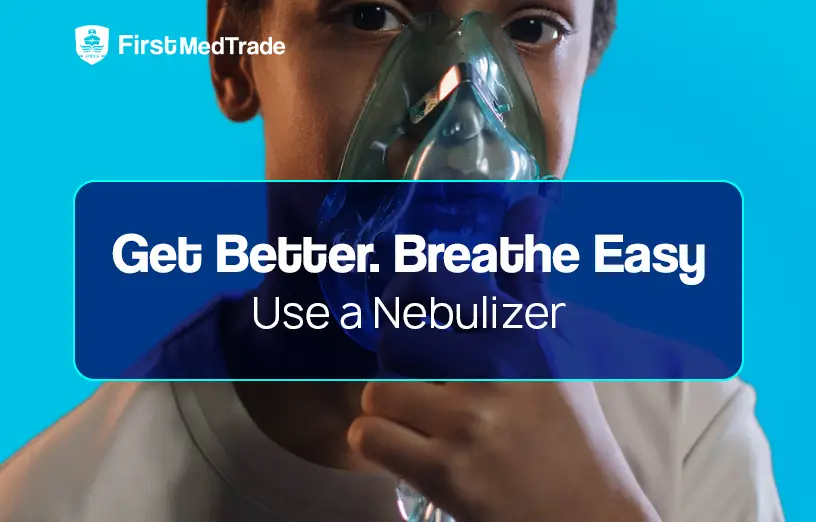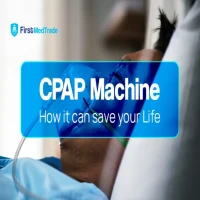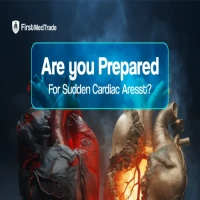Get Better. Breathe Easy. Use a Nebulizer
Chronic obstructive pulmonary disease (COPD) treatment aims at reducing the number and severity of seizures. This will help improve your overall health, make
your breathing easier and guarantee your ability to exercise. The most commonly prescribed treatment for COPD is inhalation therapy, including inhalers and
nebulizers. The rapid and effective relief of symptoms with a nebulizer can significantly improve your quality of life and even reduce emergencies.
What is a nebuliser?
A nebuliser is a piece of medical device that uses a liquid drug to generate mist, allowing a person with asthma or another respiratory condition to quickly deliver the drug directly to the lungs.
Nebulisers are usually available in both electric and battery-powered versions, and are either portable (easy to carry around) or placed on a table and plugged into a wall.
Both nebuliser versions consist of:
- A base holding the air compressor
- Small container for liquid medication
- A tube that connects the air compressor to the drug container
- A mouthpiece or mask on top of the medicine container used to inhale the mist.
Nebulizers are useful in a variety of situations, including:
- Chronic obstructive pulmonary disease (COPD)
- Asthma
- Bronchiectasis
- Cystic fibrosis
- Pulmonary fibrosis
Nebulizers are also a convenient way to administer medicines during palliative care and to very young children.
Types of nebulizers
There are three main types of nebulizers:
A jet or compressor nebulizer uses a compressed gas (such as air) to make an aerosol out of the drug. These are the most common nebulizers for home use
and are cheaper.
Ultrasonic nebulizers generate aerosols through high frequency vibrations. These are more commonly used in hospitals and are not usually for personal use.
The mesh nebulizer uses a mesh cap with small holes to help administer the drug in a very efficient way. These nebulizers are newer and often more effective
than jet nebulizers. Also suitable for home use.
How does the nebulizer work?
The nebulizer supplies the liquid drug through compressed air. While people with asthma usually use both a nebulizer and an inhaler, sometimes a nebulizer is
easier to use. This is especially true for young children who do not have the proper skills for inhalers.
However, when the airway narrows, such as during an asthma attack, the nebulizer can take longer to set up, so an inhaler is likely to be the best option.
Examples of medicines used in nebulizers are:
- Bronchodilators are medicines that help open the airways and make breathing easier. Doctors often prescribe bronchodilators to patients with asthma, COPD,
or other respiratory illnesses.
- Medical-grade saline solution is a sterile solution that helps open the airways and thin secretions, removing mucus from the lungs and making it easier to
cough.
- Antibiotics are used to treat or prevent infections. Nebulizers can deliver antibiotics directly to the lungs or respiratory tract if someone has a severe respiratory
infection.
Your doctor will decide which medicines you need to take through the nebulizer based on your individual needs. You may be given a premixed liquid container
that can be opened and placed in the machine. Alternatively, you may need to mix the solution before each use.
Not all drugs can be administered with a nebulizer. Certain drugs, such as steroids, should be given via an inhaler.
How to use it
Your doctor will tell you how often you should use your nebulizer. They also help you with specific instructions for your treatment.
Always take your medicine as prescribed. It is important to follow your doctor's instructions on when and how to use the nebulizer. It may take about 10 to 15
minutes to use the nebulizer. In this case, breathe normally.
General instructions for using a nebulizer:
- First, make sure all parts are clean.
- Pour the liquid drug into the drug cup.
- Connect the plastic tube to the liquid tank and compressor.
- Then attach the mouthpiece or mask.
- Turn on the nebulizer and make sure it mists properly.
- Insert the mouthpiece into your mouth or place the mask firmly over your nose and mouth.
- Breathe in slowly, but normally, until all medications are exhausted.
How to select the right nebulizer
The choice of an appropriate nebulizer depends on the type of illness you have or the symptoms of your child. Other important aspects to consider are how
often, how acute, and the location you use your device.
Consider the following questions when choosing the right nebulizer.
What kind of illness is the nebulizer used for?
Different respiratory illnesses affect different parts of the respiratory system. The droplet or particle size is decisive for ensuring where the droplet settles during
inhalation, and thus for the treated area of the airway. Larger drug particles deposit in the upper respiratory tract. Some examples of upper respiratory tract
disease are runny nose (rhinitis) and chronic sinusitis. Smaller drug particles enter the lower respiratory tract. COPD, asthma, bronchitis and bronchiolitis are
examples of lower respiratory tract disease. Therefore, it is important to choose a nebulizer that provides the appropriate particle size for the condition being
treated.
Who uses the nebulizer?
For patients with severe respiratory conditions such as COPD and asthma, a nebulizer with a high degree of spraying is better because they deliver higher
levels of the nebulized active ingredient.
For babies and children, a quieter nebulizer that produces a smoother mist may be more comfortable and less disturbing when inhaling the drug.
When treating patients with multiple respiratory tract diseases, we recommend a nebulizer that can produce different particle sizes.
Where and how often are nebulizers used?
If you want to use your nebulizer frequently, you should choose a strong nebulizer with a high spray effect that is suitable for intensive use.
If you need treatment at different times of the day, we recommend a lightweight, portable nebulizer.
If you travel a lot, a completely portable nebulizer, or mesh nebulizer, is the best choice. A portable nebulizer similar in size to an inhaler is battery-powered but
offers optimal performance and flexibility.
Do you really need a prescription?
Nebulizers and medications that are usually used require a prescription from your doctor or other health care provider. It is possible to buy a nebulizer device
online without a prescription, but you may still need a doctor’s prescription.
Some pharmaceutical companies however require the use of a specific type of nebulizer, so it is advisable to double-check with your pharmacist or doctor before making a purchase.
How to clean and care for your nebulizer
Since you take in vapor from your nebulizer, it needs cleaning. Bacteria and other germs can grow in it if the machine is not properly cleaned.
Your doctor will give you detailed instructions on how to clean and care for your device, but in general:
- Your nebulizer should be washed with hot soapy water after each use.
- Disinfect once a week.
- Must be air-dried with a paper towel or a clean cloth.
- Replace the tube regularly since it is not possible to completely clean the inside of the tube. Your healthcare provider can explain how often you need to
change the tubing.
Daily cleaning
- Remove the mouthpiece/mask and remove the drug container.
- Wash these parts with hot water and mild liquid detergent.
- Shake off excess water if any.
- Air dry these pieces on clean kitchen paper or a towel.
Disinfecting
- Remove all removable parts (mouthpiece and drug container).
- Soak them in the solution provided by your doctor or in 1 part of white vinegar and 3 parts of hot water.
- Soak these parts for 1 hour or as long as instructed.
- Remove the parts and air dry.
Storage tips
- Store washed and dried parts in a closed plastic container or bag.
- Store in a cool and dry place.
- Keep your nebulizer dust free.
Benefits of nebulizer
- If you have an asthma attack, you don't have to take a deep breath during use, which makes it easier to use.
- You can administer multiple drugs at the same time.
- Nebulizers may be easier to use for young children.
Drawbacks of nebulizer
- Nebulizers are usually not as easy to transport as inhalers.
- In many cases, a fixed power supply is required.
- It takes longer to administer the drug via a nebulizer than with an inhaler.
Did you know?
Nebulizers and inhalers are equally effective in many situations, but in some cases nebulizers are better. The nebulizer continuously supplies a mist of
medication that you breathe for 10 to 15 minutes or longer. This allows you to breathe normally through your mouth during treatment.
The inhaler, on the other hand, produces a short burst of aerosol drug. With them you have to adjust your breathing to inhale the medicine quickly and deeply.
Next, you have to hold your breath to allow the drug to enter your system. If you have a lot of trouble breathing, the inhaler may not get the medicine into your
lungs as effectively as the nebulizer. Also, certain COPD medications such as metaproterenol and acetylcysteine can be given with a nebulizer, but not with an
inhaler.







